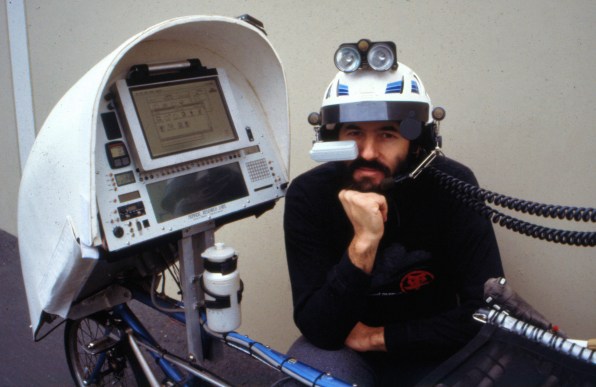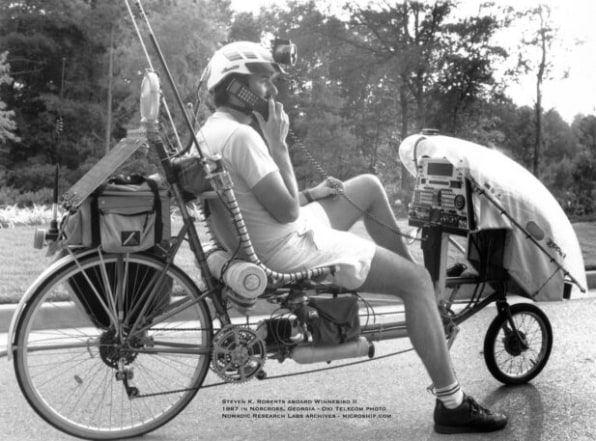It’s relatively easy to become a digital nomad in 2021. You just need a laptop, a good internet connection and a job that allows you to work remotely — something that is increasingly common thanks to the pandemic.
However, none of these things existed when the world’s first digital nomad started roaming the planet back in 1983.
Back then, Steve Roberts, an Ohio-based freelance writer and corporate consultant, had to forge his path as a “technomad” using nothing but 80s-era devices and his trusty recumbent bike.
In an interview with Fast Company, Roberts described the moment he realized that he no longer wanted to work in an office.

“Somewhere along the line I thought, ‘Wait a minute, freelance writing is supposed to be a license to be free, yet I’m chained to my desk,'” he said.
Based on his epiphany, Roberts hatched a plan to sell all his possessions and hit the road on his bike, writing articles to support himself along the way.
At first, Roberts used a Kyocera TRS-80 Model 100 portable computer and a solar power system to write articles in his tent after a day of cycling. Later, he built a computer into his bike frame and created a makeshift keyboard for its handlebars, which allowed him to write while pedaling.
To communicate with his editors, he used a CompuServe account and pay phones.

Over the years, Roberts’ unusual lifestyle attracted attention from the media, and many of the articles about him pondered whether technology could eventually free workers from the office.
“I think what gave my story legs was that it showed the implications of what this technology could do for people,” he said.
Today, Roberts still works as a digital nomad, and he is joined by at least 35 million other location-independent workers of all ages, genders and nationalities from around the world.
That number is expected to grow as technology advancements, societal changes and the aftermath of the pandemic continue to change the way we work.
